According to the United Nations World Tourism Organization, sustainable tourism is defined as “tourism that takes full account of its current and future economic, social and environmental impacts, addressing the needs of visitors, the industry, the environment, and host communities.” Put simply, travel should preserve cultural and traditional values through authentic experiences, foster intercultural understanding, and provide long-term and fairly distributed socio-economic benefits, all while supporting the conservation of natural heritage and biodiversity.
Unfortunately, this is often easier said than done. Especially in China.
With an abundance of flashy (literally and figuratively) light shows that cause light pollution and disrupt the ecosystem, inauthentic and sanitized ‘old towns’, and cultural performances that feel about as genuine as a Broadway show, exploring parts of China can often feel as if you’re walking on an elaborate Hollywood set rather than getting a genuine taste of everyday life in the Middle Kingdom. But, it definitely does not have to be that way.
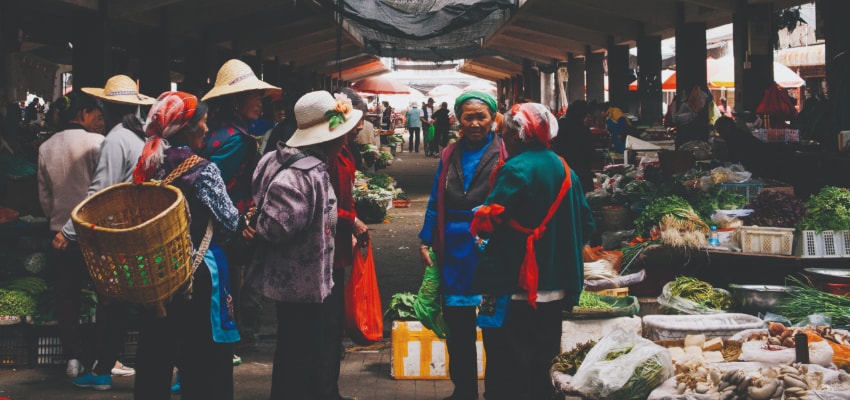
Dali Market. Image by Elizabeth Phung
The Tourism Industry Conundrum
Most people agree that travel can do wonders for a community and local economy. Jobs are created and financial resources are exchanged. A destination’s cultural, historical, and natural heritage can be celebrated and explored. And the authentic experiences shared by the locals and travelers can help to break down walls of misunderstanding.
However, it’s becoming an increasingly tough proposition to balance all those benefits while still preserving what made the experience beautiful to begin with. As any destination struggling from overtourism can attest to, and as pointed out by our founder, Mei Zhang,
“The travel industry itself is almost an enemy to the beauty of travel. Whenever any beautiful travel experience exists, when the industry moves in it’s like locusts coming to town and it wipes out the beauty of it.
So why is that? The travel industry always talks about volume, everything must have volume in order to make money — and yet the beauty of travel does not involve volume. It’s the opposite.”
In other words, not only can the mass of humanity all trying to enjoy the destination at once spoil the experience, but the temptation to monetize, standardize, scale up, or otherwise manufacture the experience for the sake of profit often results in the distortion of the culture or place overall. All authenticity goes out of the window.
So, how to solve the problem? The answer lies in creating in-depth, meaningful, and small-scale organic travel experiences.
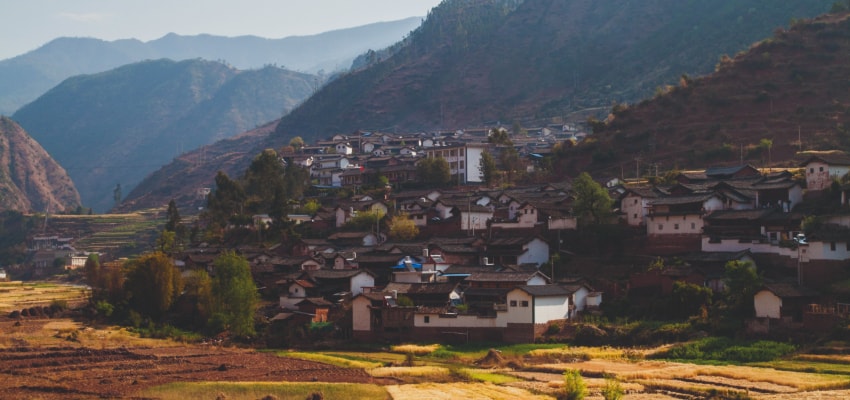
Dali Landscape. Image by Elizabeth Phung
An Authentic Answer
Mei Zhang was pushing the notion of socially sustainable, authentic travel before AsiaTravel was even a twinkle in her eye. While working for McKinsey & Company as a consultant in the late ‘90s, Mei was part of a project tasked with developing environmentally responsible tourism models for The Nature Conservancy in Yunnan, her home province.
Her suggestion – a culturally sensitive approach that kept the province’s natural habitat and culture carefully preserved – was rebuffed by the local government as too difficult and too slow. Sadly, this wasn’t an isolated reaction. On top of the challenges of pulling off ‘profitable’ authentic travel, many local authorities failed to see the appeal of these sorts of travel experiences, viewing them as backward.
For this reason, in 2000, Mei took matters into her own hands and created AsiaTravel with the goal of connecting travelers from around the world with the disappearing traditions of China, one trip at a time.
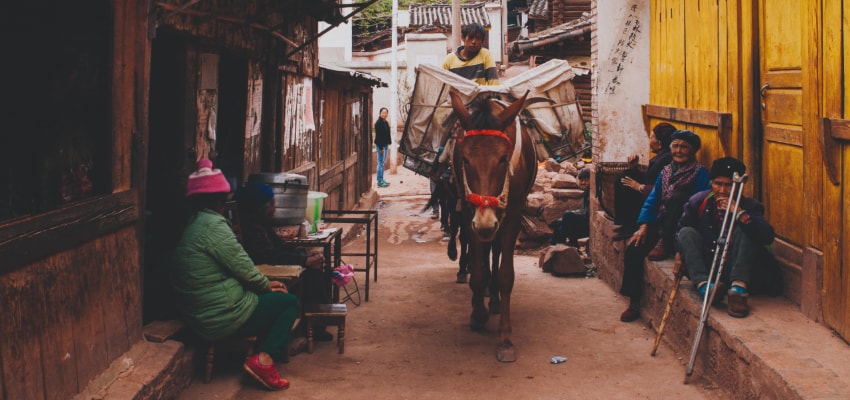
A donkey in Dali. Image by Elizabeth Phung
Authentic Travel, AsiaTravel Style
So, what does authentic travel mean to AsiaTravel? For starters, it means stepping out from behind the ubiquitous flag that has come to represent tours throughout China. It means guiding travelers out of the well-worn footsteps of the tourist circuit.
Although a journey through the Middle Kingdom should, of course, include a visit to the typical must-sees, authentic travel is much more about helping travelers to see places through the eyes and stories of locals and experts (and, not-so-coincidentally, away from the usual crowds of people). It’s about helping the place to come alive in a way that it couldn’t if you were exploring these places on your own or on a mega-bus-tour.
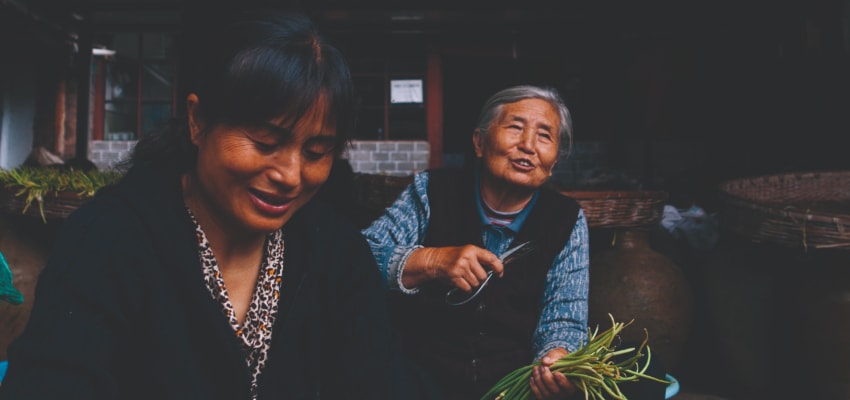
Image by Elizabeth Phung
AsiaTravel forges a path to the hidden, more remote corners of the country. While not as grand as the Great Wall, as iconic as the pandas, or as sparkling as the Shanghai skyline, we believe that it’s these little pockets of humanity and nature that deserve to have their stories told just as much as their more well-known counterparts – if not more.
Creating authentic experiences is easier said than done, of course. Here at AsiaTravel, we’re able to find these pockets of humanity because we can leverage our nationwide network of guides, local partners, and China-based staff. This allows us to not only stay in-the-know with happenings like the opening of a new boutique hotel but also allows us to take advantage of personal relationships and insider knowledge to source authentic experiences for our clients.
So, that works for our guests. But, how do we make culturally sensitive sustainable travel a reality not just for our travelers, but also for the communities we visit?
Socially Sustainable Travel in a Modern World
Creating sustainable travel practices all comes back to the definition: travel should preserve cultural and traditional values through authentic experiences, foster intercultural understanding, and provide long-term and fairly distributed socio-economic benefits.
A perfect illustration of our efforts to preserve traditional ways of life and nurture intercultural understanding can be found in one of our flagship journeys: Travels Through Dali with a Leg of Ham, created by our very own founder Mei Zhang. The journey, which is inspired by Mei’s book of the same name, follows her return to her hometown (with a leg of Yunnan ham in hand) to rediscover the stories of her childhood through a wiser, more worldly lens.
Both the story and journey are an ode to her homeland – the history, traditions, people, and way of life – as well as an entreaty to travelers to not just go to a destination, but to follow it to its roots. The aim of the journey, and AsiaTravel’s fundamental approach to sustainable travel, revolves around getting to know the people of Dali as they are. Nothing breaks down cultural barriers nor fosters greater understanding than breaking bread or talking over tea with the people at the heart of the place. Imagine learning how to make cheese with a farmer in her home or watching a master ham maker lovingly prep a haunch with locally produced salt. What if you could chat about a pickle empire that has withstood the test of communism and time with an 83-year-old lady, before sitting down for a homecooked meal with an ayi?
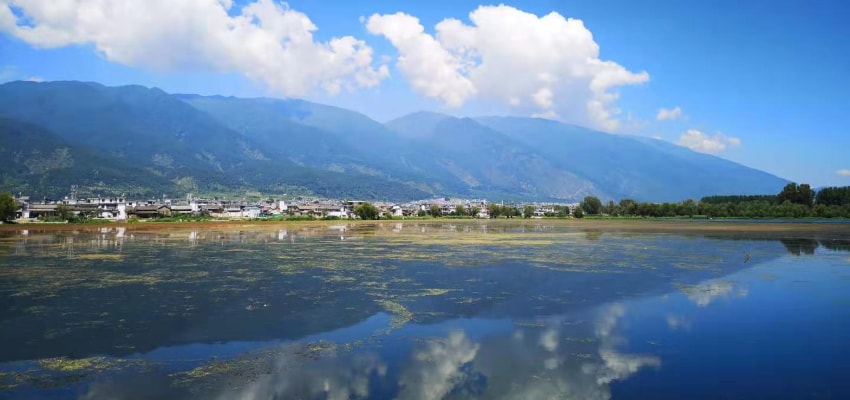
Dali. Image by Dali Guide, Frank Shan
Our Dali guide, Frank Shan, believes that this is the right approach to travel. After his many years of guiding, he tells us that travelers find it ‘amazing’ to connect with the local people and love sharing in the cultural traditions. On top of that, hosts are always happy when the foreigners come to town for a chat.
As China’s younger generations leave the nest of their hometowns for the hustle, bustle, and money of the megacities, carrying on the stories of longstanding traditions through sustainable travel becomes ever more important. Hopefully, as job opportunities and tourism dollars find their way into these local villages, China’s youth will be persuaded to stay.
Sustainable Socio-Economic Benefits
The siren call of the tourism industry’s cash flow can often be hard to resist. Understandably so, when the arrival of tourist spending can contribute to the revitalization of an entire city.
Yet revitalization is a slippery slope, to which any party who has been pushed out of a community or seen years of history bulldozed in the name of gentrification can attest. An area’s character and heritage are often the first things to be cut or ‘refinished’ in the name of progress. Moreover, due to travelers often sticking to the well-worn confines of the tourist trail, these tourism benefits normally never trickle down to communities tucked away in remote parts of the country. This is yet another reason why it is so crucial to spend time off the beaten path and make a point of supporting local businesses.
Meeting all the goals of sustainable tourism becomes quite easy once the decision is made to invest in local businesses and visit communities in an authentic way. For instance, collaborating with small village communities ensures the preservation of the area’s heritage through championing the ‘realness’ of the untouched community while providing tourism revenue. Staying in local accommodations like boutique hotels and guesthouses, and visiting local craftsmen, artisans, and restaurants provides income sources while giving visitors yet another chance to experience the reality of daily life there.
Another way AsiaTravel works to support local economies is by providing consistent employment and competitive wages to more than 300 local guides, many of whom are members of an ethnic minority. They are experts in, and passionate advocates for, their home region’s cultures, history, and stories. This reliable influx of financial resources into households and communities through the employment of local guides and patronage of local businesses helps bolster often-struggling economies that don’t normally have access to valuable tourism dollars.
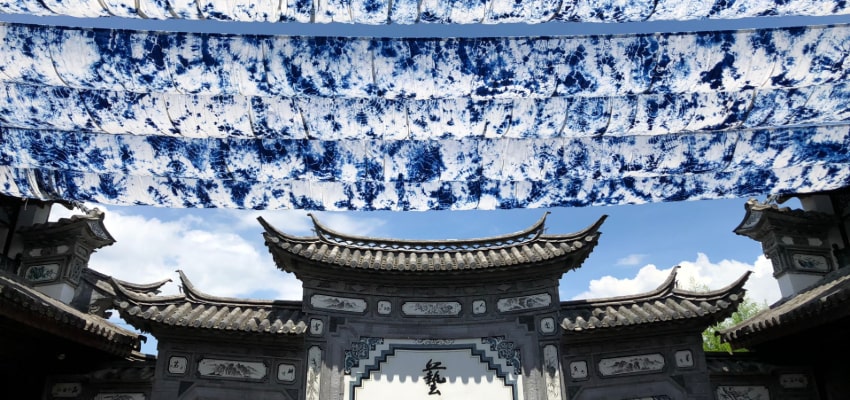
Tie-Dye Fabric in Dali. Image by Vincent Yang via Unsplash
Our approach seems to be working. To illustrate, let’s revisit a couple of our Travels Through Dali hosts: the cheesemaker has generated enough income hosting travelers and making shoes to fund a partial home renovation and new roof tiles. As for the pickle lady, not only is business booming, but all four of her children are carrying on the family’s pickle legacy, with her oldest son, once a government employee, leaving his job to oversee production. Therefore, while socially sustainable travel may not have the same sizeable instant financial gratification of the commercialized, follow-the-flag travel experiences offered elsewhere in China, it’s the slow and steady work that helps to preserve a way of life that has persisted for generations.
What Can You Do?
So, what can travelers do to ensure that their money is going where it’s most needed? It’s simple: think local. First, have a more authentic dining experience like grabbing a jianbing from the street food vendor on the corner, picking up locally grown produce from a busy market, or sitting down for a plate of lovingly made jiaozi at a family-run restaurant. Next, hunt for locally made crafts, art, and souvenirs in lieu of mass-produced knockoffs. Sure, that handwoven scarf or Bai-made batik fabric may cost a bit more money but opting for this sort of tangible memory gives necessary jobs to the local craftsmen and artists and helps to preserve authentic cultural heritage. Additionally, if you’re going to use a guide, choose one that is from the area to ensure maximum learning and financial benefits. Not only are you supporting the local economy, but you’re also getting an up-close-and-personal glimpse of daily life. Finally, try to spend as long as you are able in an area to help spread the resources around.

A local meal with an ayi. Image by Elizabeth Phung
How to Do It Yourself
Admittedly, experiences like this are difficult to coordinate without on-the-ground knowledge and connections like ours. However, if you choose to arrange your own travels without the assistance of an expert, we highly recommend that you spend time doing your due diligence to learn about the destination. And we don’t just mean a cursory web search – really make an effort to dig. What aspects of the history, culture, and natural heritage speak to you? Think outside the bucket list box, color outside the tourism lines. Then, put yourself in a situation once you arrive that can get you as close to the heart of those intriguing facets as possible, whether that is by connecting with an enterprising local for a walking tour or making chitchat with your neighbor in the restaurant at dinner. Offset a visit to a major landmark with a palate-cleansing stop by somewhere not in all the guidebooks. Leave space for travel serendipity and take time to truly connect with a place. When you open yourself up to possibilities and connect with people, you never know what kind of authentic experiences can fall into your lap. Locals are more than happy to share their culture, as long as you are willing to listen. And, whatever you do, just say no to the flag.
Sustainable travel isn’t necessarily the easiest way to travel. But we’re trying to ensure that changes. China and her people are fascinating and beautiful as they are, so we will continue to do everything we can to promote and protect this authentic China.
With some careful research and planning, a healthy dose of curiosity, consciously creative decision making, and a bit of an appetite for adventure, anyone can experience the ‘real’ China. Traveling this way not only helps you to better understand another community, it also helps to preserve the importance of that community and way of life.
It’s a beautiful circle that we are proud to be a part of. We challenge you – potential AsiaTravel clients and solo travelers – to think past the safety of the tourist circuit and the easy money of the sanitized, manufactured ‘cultural’ experiences. Say ‘no’ to the canned inauthenticity of the old towns and light shows in exchange for hands-on experiences, conversations over meals in a local’s home, and snapshots of life in remote villages.
After all, it is these genuine human connections that make, and keep, travel beautiful.
When it comes to culturally sensitive, socially responsible travel, Robert Frost was definitely on to something: taking the road less traveled makes all the difference.
We hope you’ll join us on our journey.
